As a marketer passionate about the huge potential of social marketing, whenever I see a marketing challenge, I almost always think to myself: "How could they solve that problem with social?"
When fans love a brand, they're happy to talk it up and share stories about it on social networks. While we were taught by our mothers to be cautious when discussing religion and politics, we are increasingly sharing views on social networks that reveal how we think, which in turn influences our network of friends.
Do the 2012 presidential candidates "get" social?
The challenge of engaging with and inspiring a national community to rally behind a political candidate is really no different than any other marketing challenge. Step 1: Introduce and create an emotional connection with a brand/candidate. Step 2: Entertain, engage with relevant content, and make the experience fun. Step 3: Make sure the experience can be easily shared and spread, with as little friction as possible. Step 4: Rinse and repeat, while staying current, relevant and diverse.
How do the remaining 2012 candidates stack up to this four-step approach? I decided to take a quick look and here's what I found on Facebook:
Barack Obama
As the incumbent with an impressive 25.8 million fans, Obama's longer track record and experience on Facebook should give him a bit of an advantage. His team's track record on social was reflected in their immediate move to Facebook Timelines for business, where they incorporated fun and interesting Milestones.
The Obama team used "gamification" in the leaderboard-style "Are You In" game that rewarded fans by telling them how many people were inspired to join the Obama campaign as a result of their wall post. This is a clever strategy and lends itself nicely to creating a viral experience. Obama needs to continue to engage that fan base.
Mitt Romney
Mitt Romney's team has accumulated 1.5 million fans throughout his campaign, using several tactics with mixed results. His team upgraded his Facebook page to the new Timeline look quickly, but neglected to tell the Romney story with "Milestones" or relevant history.
Not acknowledging the importance of keeping things as frictionless as possible, Mitt's Facebook app, "Stand with Mitt," asks fans to go to exhaustive measures to show their allegiance. By requiring four steps for possible inclusion in a photo gallery on Facebook, supporters have to do too much work to show their support.
On the plus side, the Romney campaign got a little more socially creative with the "What's your take?" app, which asks followers to answer various questions like "What is the key issue for you in 2012?" The app creates an open dialogue with mixed negative/positive comments and it's good to see the campaign managers have let negative comments stand.
Moving forward, the Romney team should move towards simplicity to encourage as much broad-based support as possible.
Rick Santorum
It's no surprise that Rick Santorum has only 187 thousand Facebook fans, as he doesn't have much of an "inside" Facebook strategy, re-directs almost all links out of Facebook to other sites and has not yet upgraded to the new Facebook Timeline.
The Santorum team also does little to provide a Facebook experience worth passing along to friends, essentially "retargeting" the same supporters. Also, while his team has cleverly built a "Santorisms" e-book, it was a wasted opportunity since they didn't make the e-book easy for fans to share and spread virally. Fans love sharing content that reflects their views, and photos in particular create a perfect opportunity for a social connection that can foster likes, comments and discussion.
Newt Gingrich
While Obama, Romney and Santorum were focused on building engagement and word of mouth, Newt Gingrich's use on Facebook has been focused on raising campaign funds. With only 296 thousand fans, Newt has to focus on getting those few supporters to spread the word easily and quickly.
Many of his pages send fans off Facebook, where they are likely to engage and share, to his site. Asking for name, email and location before spinning the fan off to www.newt.org, indicates absolutely no acknowledgement of the potential social power of Facebook to engage fans, and more importantly their friends, on Facebook.
The Same Social Marketing Rules Apply to Brands and Candidates Alike
The practice of social campaigns isn't new and candidates could learn a lot from Facebook heavy-hitters: Starbucks, Coca-Cola, Lady Gaga, Universal Pictures, Nickelodeon. The same lessons apply:
- Keep social campaigns entertaining, simple and frictionless
- Create an environment that encourage supporters/fans work on your behalf to spread powerful online and offline word of mouth
- Engage fans in a conversation
- Be authentic
- Give fans great content to share
- Respect the context -- keep fans where they found you.
Politicians love to talk about "the power of the people," and crave photo opportunities where they are eating "down home" food and conversing with "real" people. But if they really want to tap into the power of the people, and get those people working on their behalf, social media sites is where it's happening. On a massive scale. The candidate that can harness that power has a better chance of spreading his winning message before, during and after November's election.